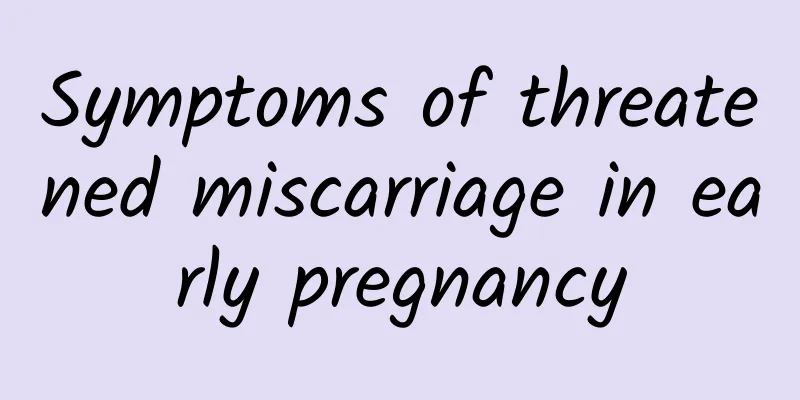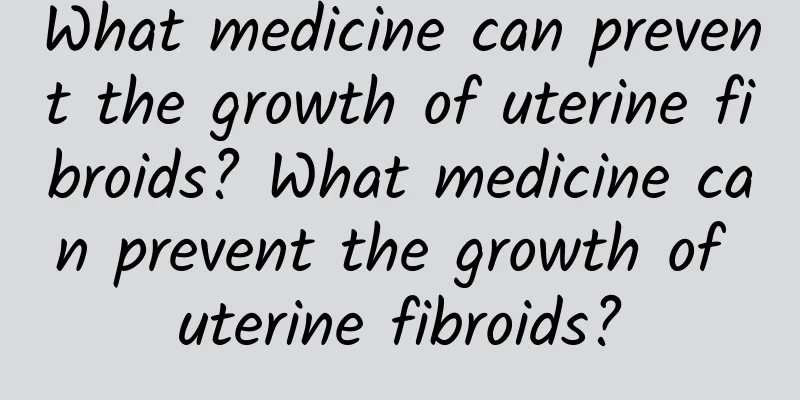What are the effects of complete uterine fibroid removal? Does complete uterine fibroid removal have any effect on the body?

|
What are the effects of complete hysterectomy? This is a question that many women are concerned about when facing hysterectomy. With the development of medical technology, complete hysterectomy has become one of the main options for treating uterine fibroids. But does this surgery have some potential effects on the body? Let's discuss them one by one. 1. Increased risk of surgical wound infection Complete myomectomy requires an incision in the abdomen, which means the risk of infection at the surgical wound increases. Although modern medical technology can greatly reduce the risk of infection by strictly sterilizing surgical instruments and the surgical environment, it is still possible. Therefore, after the operation, the wound should be properly cared for and disinfected to avoid infection. 2. Postoperative pain and prolonged recovery period Myomectomy is a relatively complex surgery that may require a long recovery period. After the surgery, the patient may experience a certain degree of pain and discomfort. This is mainly caused by the local trauma caused by the removal of the uterine fibroids during the operation. The length of the recovery period varies depending on the individual's physical condition, but it usually takes several weeks or even months to fully recover. 3. Increased risk of infertility after surgery Complete hysterectomy may have some negative effects on women's fertility. During the operation, in order to completely remove the uterine fibroids, part of the uterine tissue may need to be removed. This may affect the structure and function of the uterus, and thus affect women's fertility. Therefore, if the patient has a fertility plan, they should fully communicate with the doctor before the operation to understand the impact of the operation on fertility and make appropriate decisions. In general, radical hysterectomy may have some potential effects on the body while treating uterine fibroids. However, not every patient will experience these effects, and the specific effects vary from individual to individual. In addition, the continuous development of modern medical technology has greatly reduced the risks of surgery, and postoperative recovery is relatively fast. When deciding whether to undergo radical hysterectomy, patients should fully communicate with their doctors, understand the risks and effects of the surgery, and make wise decisions based on their own circumstances. |
Recommend
Brief analysis of two common types of cervical erosion
There are two types of cervical erosion that are ...
How to provide care and health care for patients with functional uterine bleeding?
While treating functional uterine bleeding, patie...
Experts introduce the treatment of chronic adnexitis
Adnexitis is divided into two types: acute and ch...
Will ovarian cysts cause amenorrhea?
Ovarian tumors can occur at any age, but are more...
What is the reason for sticky and stringy menstruation? Drink some brown sugar ginger water
Generally, dark menstrual blood and thick menstru...
Daily care for congenital absence of vagina
In life, people should pay attention to the impac...
Sleep well and lose weight faster! To lose weight, check your sleep quality first
What do you do when you can't sleep? In fact,...
What vegetables can I eat more for uterine fibroids? What vegetables are better for uterine fibroids?
What vegetables can I eat more with uterine fibro...
Ruisha lost 10 kilograms after giving birth, and is thinner than before pregnancy! Key: Replace rice with this...
After giving birth to her daughter Nika, Taiwanes...
Experts explain scientific methods for diagnosing cervicitis
There are many clinical diagnostic methods for ce...
Does functional uterine bleeding affect pregnancy?
Functional uterine bleeding may affect pregnancy,...
How do you get multiple uterine fibroids? Are multiple uterine fibroids benign tumors?
Are multiple uterine fibroids uterine fibroids? S...
What to do if your period comes 10 days early
What should I do if my period comes 10 days early...
Not paying attention to menstrual hygiene may cause adnexitis
Not paying attention to menstrual hygiene may cau...
Why do we need to check for uterine fibroids during premarital examinations?
Why should uterine fibroids be checked during pre...









